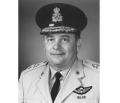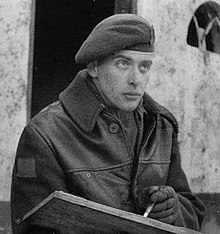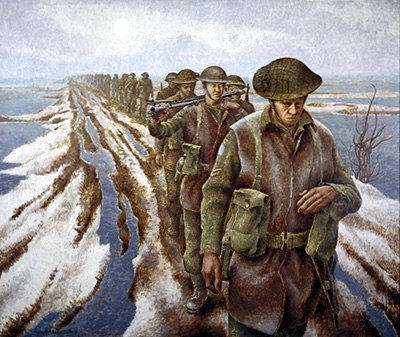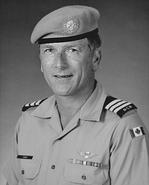Andy started his regular career as, I believe, a trooper in the RCD and then was commissioned via the Officer Candidate Program in the RCASC, which was a usual step for young men who wanted to fly in the army. I met him in Gagetown in the early sixites when he was serving in the EBS Bn (Experimental Brigade Service Battalion) and worked with him again on my last or second last posting when we served together in J3 in NDHQ. By that time he was a very senior aviator who had served for a while in DFS.
SEGUIN, Lt. Col Andre (Andy). Ret'd.
OMM.CD.
Passed away on the 16th of May, 2013 at the Queensway Carleton Hospital. Beloved husband of Pat, and cherished father of Chantal. Son of the late Louis and Marguerite Seguin, and stepson of the late Josephine Slapinsky. Brother of Jean-Louis (Lucy and Jasmine). Will be missed by brothers-in-law Colin and Malcolm Jones and their families. A 39 year proud veteran of the Canadian Armed Forces. Served across Canada, in Germany, at the United Nations as a Peace Keeper, Gulf War 1, Namibia and the Sinai. As per Andy's wishes, organ donation was effected followed by cremation. A memoriam mass will be held at St. Patrick's Roman Catholic Church, 15 Steeple Hill Crescent, Nepean on Friday the 31st of May, 2013 at 11:00 a.m. Family, friends, military colleagues, masonic brethren and legion comrades are invited to attend. After the Mass a reception will be held at the Kanata Legion Branch 638, Hines Road, Kanata. Thank you to all nurses on Ward A3, and a special thank you to palliative care nurse Alice and her student for their compassion. In lieu of flowers, donations to the Ottawa-Carleton Alzheimer's Society or the Kanata Legion Branch 638, would be appreciated. All are also invited to visit the online memorial at www.forevermissed.com/ andy-seguin.
SEGUIN, Lt. Col Andre (Andy). Ret'd.
OMM.CD.
Passed away on the 16th of May, 2013 at the Queensway Carleton Hospital. Beloved husband of Pat, and cherished father of Chantal. Son of the late Louis and Marguerite Seguin, and stepson of the late Josephine Slapinsky. Brother of Jean-Louis (Lucy and Jasmine). Will be missed by brothers-in-law Colin and Malcolm Jones and their families. A 39 year proud veteran of the Canadian Armed Forces. Served across Canada, in Germany, at the United Nations as a Peace Keeper, Gulf War 1, Namibia and the Sinai. As per Andy's wishes, organ donation was effected followed by cremation. A memoriam mass will be held at St. Patrick's Roman Catholic Church, 15 Steeple Hill Crescent, Nepean on Friday the 31st of May, 2013 at 11:00 a.m. Family, friends, military colleagues, masonic brethren and legion comrades are invited to attend. After the Mass a reception will be held at the Kanata Legion Branch 638, Hines Road, Kanata. Thank you to all nurses on Ward A3, and a special thank you to palliative care nurse Alice and her student for their compassion. In lieu of flowers, donations to the Ottawa-Carleton Alzheimer's Society or the Kanata Legion Branch 638, would be appreciated. All are also invited to visit the online memorial at www.forevermissed.com/ andy-seguin.











